RARE! WWII TOP SECRET D-Day BIGOT Map USS Eldorado Operation Iceberg Okinawa COA
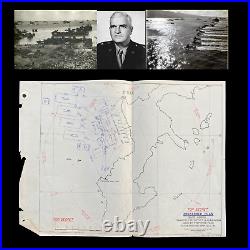
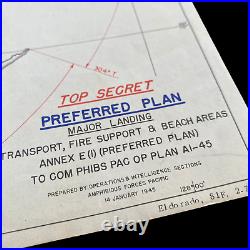
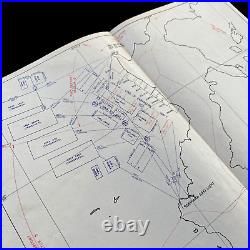
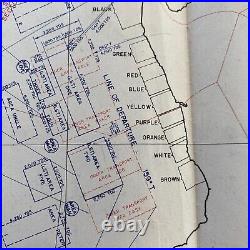
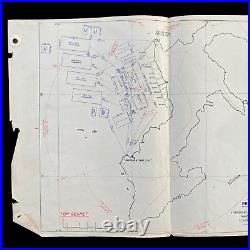

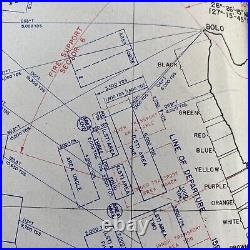
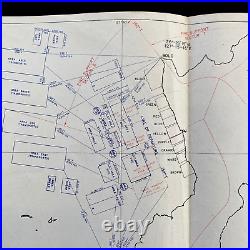

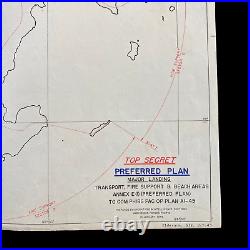
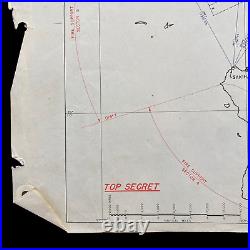
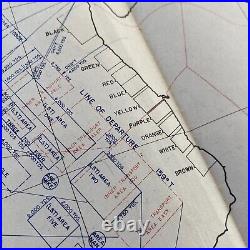
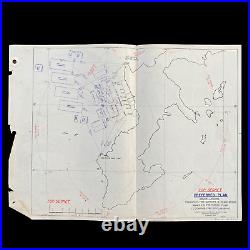
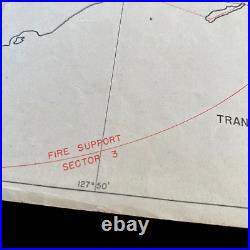
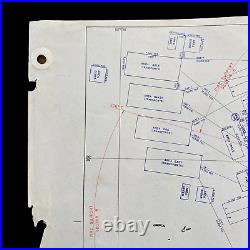
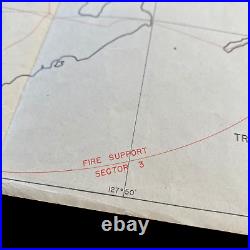
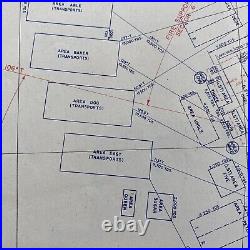
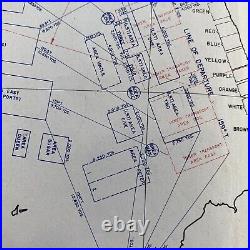
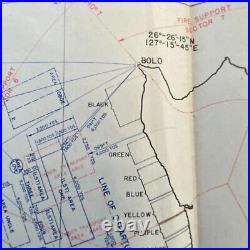
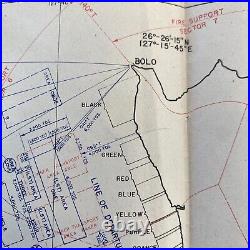
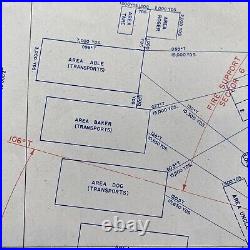
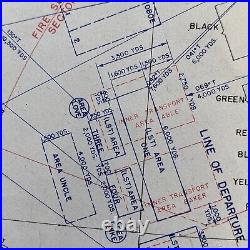
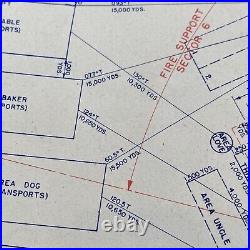
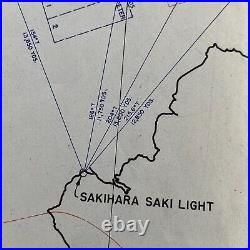

This extremely rare and museum-grade original 1945 WWII USS Eldorado TOP SECRET marked Operation Iceberg "Preferred Plan" BIGOT landing map of Okinawa was used by. Buckner (Commanding General of the 10th Army) and his Commanding Staff aboard the. During the D-Day (Love Day) landings. This BIGOT planning map details the names of all the D-Day beachhead landings locations of GREEN, RED, BLUE, YELLOW, PURPLE, ORANGE, WHITE, AND BROWN. It also notes all of the designated TRANSPORT AREAS of AREA ABLE, AREA BAKER, AREA DOG, AND AREA EASY. This map also includes very rare labels for all of the designated firing sector designations. Using this Commander's BIGOT planning map this MAJOR LANDING PLAN shows TOP SECRET details of Lieutenant General S. Buckner's landing plan for.
Only a small handful of these TOP SECRET BIGOT maps were printed by the Operations and Intelligence Sections - Amphibious Forces Pacific making this one of the rarest maps of the Battle of Okinawa. What makes this map extremely rare is that this is the USS Eldorado BIGOT command map and was used by. Buckner (Commanding General of the 10th Army) and his Commanding Staff. Since both the Commander (Buckner), Air Support Control Unit, and the Force Fighter Director Officer were all on the USS Eldorado, the USS. Eldorado was the main US Command Flagship and the.
Combat information center was the central unit for command of the invasion as well as the information center for USN air defence against the day and night air raids. This BIGOT D-Day map was used to command and plan the D-Day landings of Buckner's main ground combat elements of the U.
Army's XXIV Corps, commanded by Major General John R. Marine Corps' III Amphibious Corps, commanded by Major General Roy S. Each of these formations contained two divisions. Additionally, Buckner would have control of three other divisions, one Marine and two Army, in reserve (see figure 3). Buckner would command a total of 183,000 troops during the assault phases of the operation. Approximately 154,000 of these troops made up the ranks of the seven combat divisions, which were reinforced with tank battalions, amphibian truck and tractor battalions, joint assault signal companies, and numerous other attached service units. The Tenth Army staff performed well during the planning and preparation for the operation. They developed a complex battle plan, massive in scale, synchronizing units and resources, and coordinating with multiple staffs from multiple services. They performed similarly well during the execution of Operation Iceberg, particularly in light of the ferocious and adroit Japanese defense. D-Day Planning of Operation Iceberg.Throughout the planning, preparation, and execution of Operation Iceberg, Lt. Buckner's staff played a crucial role. The Tenth Army staff conducted detailed analysis, developed courses of action, and prepared plans and orders for the operation. They assisted Buckner with the oversight and execution of the Tenth Army's pre-battle training and movement to Okinawa.
Once the battle began, the staff played an essential part in the command and control of Buckner's army. They managed information, conducted analysis, provided recommendations to the commanding general, and provided resources to the subordinate units within the Tenth Army.
However, their performance was not without its shortcomings. On several occasions, the staff failed to accurately read the enemy situation, contributing to the loss of several opportunities to bring the operation to a more rapid conclusion.
They incorrectly believed that Lt. Ushijima's 32nd Army would make its last stand on the Shuri line. They also failed to see the opportunity for decisive action after the crushing defeat of the large Japanese counterattack on 4 May.58 The Tenth Army staff believed as Buckner did in the decisiveness of overwhelming firepower and failed to present the commanding general with any options other than frontal attacks into 32nd Army's main defensive belt. Like Buckner, the staff overestimated the effectiveness of firepower on Ushijima's superb fortifications, and became fixated on a single line of tactical thought. WWII Combat History of the USS Eldorado.
(AGC-11) was launched 26 October 1943 as. By North Carolina Shipbuilding Co. Under a Maritime Commission contract; sponsored by Mrs. Peeples; transferred to the Navy 1 February 1944; converted by Bethlehem Steel Corp. And commissioned 25 August 1944, Captain J.
Sailed from Norfolk 15 September 1944 and arrived at San Diego 29 September to embark Rear Admiral L. Reifsnider who broke his flag as Commander, Amphibious Group 4. Sailed to Pearl Harbor and there became flagship for Vic Admiral R. Turner, Commander, Amphibious Forces, Pacific.
She also carried General H. Smith, USMC, and his staff, and Secretary of the Navy J.Forrestal and his party when she sailed from Saipan 16 February for Iwo Jima. From 19 February to 9 March.
Lay off Iwo Jima, her distinguished passengers directing operations ashore and afloat. She served as headquarters for war correspondents, and broadcasted directly from the beachhead to the people at home through her facilities. Arriving at Guam 12 March 1945.
Buckner, USA, Commanding General of the 10th Army, then after rehearsals at Leyte in the Philippines, hove to off the Hagushi Beaches. Okinawa, for the initial invasion landings 1 April. Since both the Commander, Air Support Control Unit, and the Force Fighter Director Officer was embarked. Combat information center was the central unit in the air defense against the day and night air raids. General Buckner and his staff debarked 18 April to establish.Spruance, and the noted war correspondent Ernie Pyle. At the end of the war.
Was at Manila preparing for the proposed invasion of the Japanese home islands. The Japanese bombing of Pearl Harbor in December 1941 drew the United States into war against the Japanese Empire. However, after the American victory at the Battle of Midway in June 1942, the tide had turned against the Japanese. The Allies, backed by the weight of the United States' fully mobilized industrial capacity, began an inexorable march toward Japan. In late September 1944, Admiral Chester Nimitz, Commander-in-Chief of the Pacific Ocean Areas, met with the Chief of Naval Operations, Admiral Ernest King, in San Francisco to discuss the next moves in the war against the Japanese Empire.
Admiral King favored the invasion of Formosa as a prelude to the ultimate assault upon the 2 Japanese home islands. Nimitz held a different position.
After consulting with his staff and senior commanders, Nimitz had concluded that an invasion of Formosa was not feasible due to resource limitations and the Japanese strength on the island. Nimitz made his case to King, recommending the seizure of Iwo Jima, followed by the invasion of Okinawa, in the Ryukyus Islands.
Nimitz believed that, if the main purpose of the Formosa operation was to acquire air bases from which to bomb Japan, that it could be achieved at a lower cost in men and resources by capturing positions in the Ryukyus. 1 The Ryukyus offered a naval anchorage at Okinawa and were within medium bomber range of Japan, with planners estimating that seven hundred eighty bombers and the necessary number of fighters could be based there. 2 Nimitz outlined his arguments convincingly, swaying King to his point of view. King subsequently recommended to the Joint Chiefs of Staff the adoption of Nimitz's course of action, in conjunction with the invasion of the Philippines by General Douglas MacArthur's Southwest Pacific Area forces.
On October 3, 1944, the Joint Chiefs ordered Nimitz to seize Iwo Jima and Okinawa. The projected Okinawa campaign, along with the Philippines and Iwo Jima operations, were? Calculated to maintain unremitting pressure against Japan and to effect the attrition of its military forces. The operation to invade Okinawa received the codename, Iceberg. Admiral Nimitz assigned the principal mission of seizing Okinawa to Admiral Raymond A. Spruance, Commander of the U. Fifth Fleet and the Central Pacific Task Forces. Admiral Spruance's forces consisted of naval covering forces (Task Force 50), which he personally commanded, a Joint Expeditionary Force (Task Force 51), commanded by Vice Admiral Richmond Kelly Turner, and the Expeditionary Troops (Task Force 56), consisting of the U. Tenth Army, commanded by Army Lieutenant General Simon B.Since Operation Iceberg required a field army to engage in prolonged ground combat on a large island close to mainland Japan, Nimitz found it necessary to clearly define the relationships between Army and Navy commanders during successive phases of the operation. 6 He designated the initial chain of command for the amphibious operations phase of the campaign as Buckner reporting to Turner, who reported to 5 Spruance. Once Admiral Spruance determined the amphibious phase of the operation was complete, Buckner would assume command of all forces ashore, reporting to Spruance as he defended and developed the captured positions. Nimitz planned that Buckner would eventually take complete control of all forces in the Ryukyus and report directly to him. To facilitate planning, Admiral Nimitz's staff conducted a comprehensive study of Okinawa and the surrounding islands.
This joint staff study provided the basis on which the major participating commands began their planning. The American planners divided Operation Iceberg into three phases. The first phase consisted of the seizure of southern Okinawa, the Kerama Islands (known as the Kerama Retto), and Keise Shima. The Americans would also initiate base development operations during the initial phase. The Kerama Retto provided an anchorage and logistics base for the naval forces supporting the operation, and Keise Shima would permit field artillery to support the amphibious landings at Hagushi.
The second phase consisted of the seizure of Ie Shima and the northern portion of Okinawa. The third phase planned for the seizure and development of additional islands in the Okinawa area. 18 The day for the landing of the main assault force on Okinawa, set for April 1, 1945, was ironically designated as L-Day, or Love Day, in the military parlance of the time. To set the conditions for the invasion, carrier and land-based aircraft would operationally isolate Okinawa to facilitate the movement forward of the amphibious forces to the objective area.
The 77th Infantry Division would land and seize the Kerama Retto and Keise Shima six days prior to L-Day, and the naval gunfire and covering forces would pave the way for amphibious forces to approach the beaches and land the troops. The Tenth Army planners selected the Hagushi beaches on the west coast of Okinawa as the primary landing beaches. Once the assault forces landed on Okinawa, the naval forces would provide naval gunfire and air support for the land operations of Buckner's Tenth Army.
Also on L-Day, the 2nd Marine Division would conduct an amphibious feint at Minatoga on the southeast coast of Okinawa. On L-Day, the Tenth Army's assault forces, consisting of the XXIV Corps and the III Amphibious Corps, would land abreast on the Hagushi beaches.
Geiger's III Amphibious Corps would land in the north, with Maj. Hodge's XXIV Corps landing in the south. Tenth Army would isolate the southern part of the island by seizing the Ishikawa Isthmus to prevent enemy reinforcement from the north, followed by XXIV Corps attacking to the south to clear the entire southern portion of Okinawa of the Japanese defenders. 19 Buckner and his commanders hoped to use maneuver to the utmost, cutting across the island quickly, moving rapidly south, and breaking up the Japanese forces, bypassing strong points, and mopping up remaining resistance at their leisure.
20 In case the landing on the west coast was not feasible due to enemy 10 dispositions or weather and surf conditions, Tenth Army developed an alternate plan for landing on the southeast coast of Okinawa. This item is in the category "Collectibles\Militaria\WW II (1939-45)\Original Period Items\United States\Field Gear, Equipment".
The seller is "premierrelics" and is located in this country: US. This item can be shipped to United States.
- Conflict: WW II (1939-45)
- Original/Reproduction: Original
- Theme: Militaria
- Region of Origin: United States
